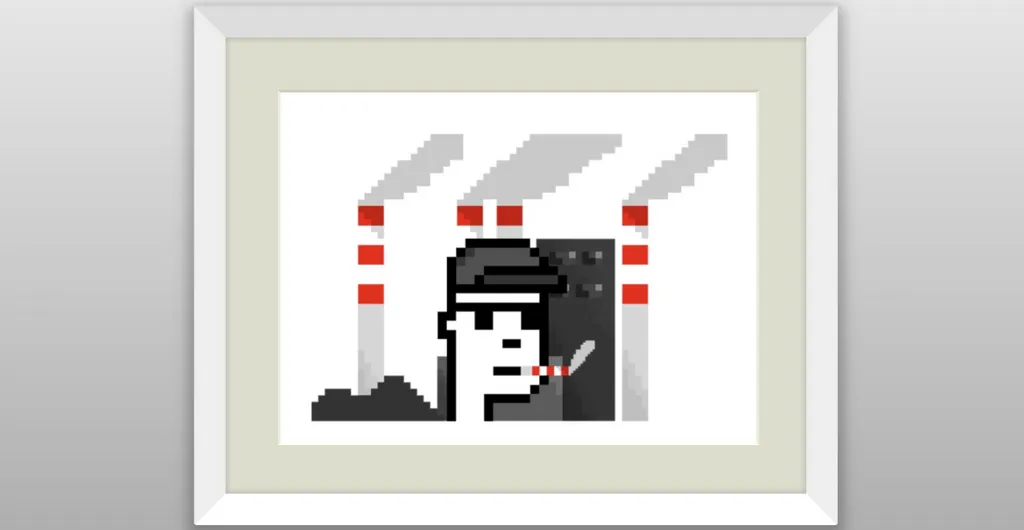Rug pull – the dark side of the crypto and NFT space. Picture this: You’ve invested in a new cryptocurrency token or NFT project. You feel amazing! But suddenly, the team behind the token disappears, taking all your funds with them. Unfortunately, you’ve just become a victim of a rug pull – one of the most despicable types of crypto and NFT scams out there.
So, what actually is a rug pull? Rug pulls occur when deceitful developers launch a new crypto token or NFT project, pump up its value through manipulative tactics, and then abscond with the funds. Ultimately, they leave investors with worthless assets. Sadly, these are a type of exit scam and decentralized finance exploit that is becoming more common by the day.
To protect yourself from rug pulls, you need to know how to identify them in the first place. Before that, however, it’s essential to understand the types of rug pulls that can leave unsuspecting investors high and dry. In this guide, we’ll dive into the different types of rug pulls, some of the most infamous schemes, and how we can try to avoid them.
Rug Pull Meaning: What is a Rug Pull?
In the world of crypto, rug pulls are a dreaded occurrence that can leave investors with a worthless asset. But what exactly is a rug pull?
A rug pull is a fraudulent act in which the creators of a project, typically in the NFT, crypto, defi, and metaverse spaces, abandon the project and run off with the investors’ funds. The term “rug pull” comes from the analogy of someone pulling the rug from under your feet, leaving you to fall.
Rug pulls can happen in various ways, such as when the creators of a project use fake identities, promise high returns on investment, or create a fake sense of urgency to get people to invest quickly. They might also manipulate the market by buying and selling the project’s assets. This creates a false sense of demand and artificially inflates the price. Then, they dump their tokens and leave investors with worthless assets.

Rug pulls can take on two different forms. These are hard and soft pulls. Hard pulls occur when malicious developers code backdoors into their token’s smart contract. Essentially, they set up a scam from the very beginning. Liquidity stealing is also a type of hard pull, where the project creators withdraw all the coins from the liquidity pool, leaving investors with a worthless asset.
On the other hand, soft rug pulls involve developers dumping their crypto assets quickly, leaving remaining investors with a devalued token. It can also mean the act of project or token founders taking investor money, then not meeting promises, such as donating funds.
How Does a Rug Pull Work?
Understanding how rug pulls work is essential for protecting yourself from financial losses. Rather than being a single type of scam, rug pulls are a category of fraudulent projects in which developers create a fake project with the intention of tricking investors into buying in. The scammers behind these projects typically create a hype around the project and lure investors with promises of quick and high returns. However, after investors put in their money, the scammers pull the rug out from under them by draining the liquidity pool. Ultimately, leaving investors with worthless assets.
In the NFT space, rug pulls often involve fake projects that are sold as collectibles. But, these are actually just a collection of random images or plagiarized content. In DeFi, rug pulls can occur when projects are created with faulty code that allows developers to steal investors’ funds. In the metaverse, rug pulls can happen in virtual worlds when scammers create fraudulent projects that claim to offer a way for users to make money within the game or platform.
How to Spot a Rug Pull
To avoid a rug pull, it’s important to conduct thorough research before investing in any project. It can take some serious digging, but there are things to look out for.
DYOR: Research Projects Thoroughly
When it comes to investing in any project it’s essential to conduct your own research thoroughly. This means taking the time to look into the project, its founders, promoters, and the contract. Be sure to examine the project’s website and social media profiles to get a sense of its overall vision and goals. Look for transparency, a clear and reasonable plan, and a solid community backing the project. Remember, always do your own research.
Look for Legitimacy
One critical aspect to consider when researching a project is its legitimacy. Established projects or backing from established brands and founders can provide a degree of credibility and give you more confidence in the project’s potential success. Furthermore, you can verify the legitimacy of the project’s smart contract by checking the contract’s code on a blockchain explorer.
By doing your own research and looking for legitimacy, you can better protect yourself from potential scams or rug pulls in the NFTs, DeFi, and metaverse spaces. Always remember to trust your instincts and approach any investment with caution.

Biggest Rug Pulls in the NFT Space
There have been several high-profile rug pulls in the web3 space over the years. Let’s take a look at a few examples.
Pranksy Rug-Pulled by Fake Banksy
NFT collector, Pranksy, clicked on a link to Banksy’s website in Discord. This page included a link to a website holding an auction for an NFT called ‘Great Redistribution of the Climate Change Disaster.’ Supposedly, it was a legitimate Banksy artwork.
After conducting some due diligence, Pranksy decided to bid. Ultimately, he won the auction and paid around $336,000 for the NFT. However, he soon realized that all traces of the NFT auction had disappeared from the Banksy website, leading him to believe the listing may have been fraudulent. However, the funds were surprisingly refunded a few hours later, without any explanation.
It’s still unclear whether this was an elaborate hoax orchestrated by Banksy himself or if his website had been hijacked by scammers.
Evolved Apes
Evolved Apes, a 10,000-piece NFT project, promised investors a thrilling game where the characters would battle each other and win rewards. Unfortunately, the project turned out to be a scam. The anonymous developer, who went by the name ‘Evil Ape,’ suddenly disappeared after the sale. Furthermore, they deleted all social media accounts linked to the project.
The developer managed to get away with around $2.7 million. This included funds supposed to be used for project-related expenses, such as marketing and game development. Moreover, winners of a competition were left without their NFT prizes, and the artist was never paid for their work.
Bored Bunny
Bored Bunny was one of the most significant NFT projects of 2022. It actually received glowing endorsements from celebrities such as French Montana, Jake Paul, and Floyd Mayweather. The 4,999 NFTs sold out within hours, each minted for 0.4 ETH. However, it wasn’t long before insiders began to suspect that the founder was defrauding investors.
Once the second collection sold out, the floor price fell dramatically. Additionally, the development team vanished, absconding with $21 million. As if that weren’t bad enough, the remaining team launched a third collection, Bored Mutant Bunny, featuring 3,000 NFTs priced at 0.25ETH. By this point, investors had realized the project was a fraud, and it failed to sell.
Are Rug Pulls Illegal?
So, are rug pulls illegal? This is a question that many people in the NFT space ask, and the answer is not so straightforward. While the NFT space is still largely unregulated and mostly lawless, the law is catching up with scammers who use rug pulls to steal investors’ money.
Two men were arrested and charged with money laundering and fraud over a rug pull scheme involving NFT project, Frosties. Ethan Nguyen and Andre Llacuna allegedly earned around $1.1 million through the scam. However, they disappeared after the sale of their NFTs, and investors lost all their money.
Ultimately, the rise of rug pulls has attracted the attention of regulators and law enforcement agencies. In fact, the US Securities and Exchange Commission is currently investigating several NFT projects.
Staying Safe With NFTs
Using NFTs can be a fun and exciting way to invest in digital assets, but it’s important to stay vigilant and aware of potential scams like rug pulls. By thoroughly researching projects and looking for legitimacy, investors can reduce their risk of falling victim to fraud. In addition, it’s important to use secure storage options like a Ledger wallet to keep assets safe even in the event of a scam. By taking these precautions, investors can enjoy the benefits of NFTs while minimizing their risk of financial loss.
Finally, always remember to do your own research and if something seems too good to be true, it probably is. Trust your instincts and exercise caution when investing in web3 projects.
The post Rug Pull Guide: From Infamous Schemes to How to Avoid Them appeared first on NFT Evening.
